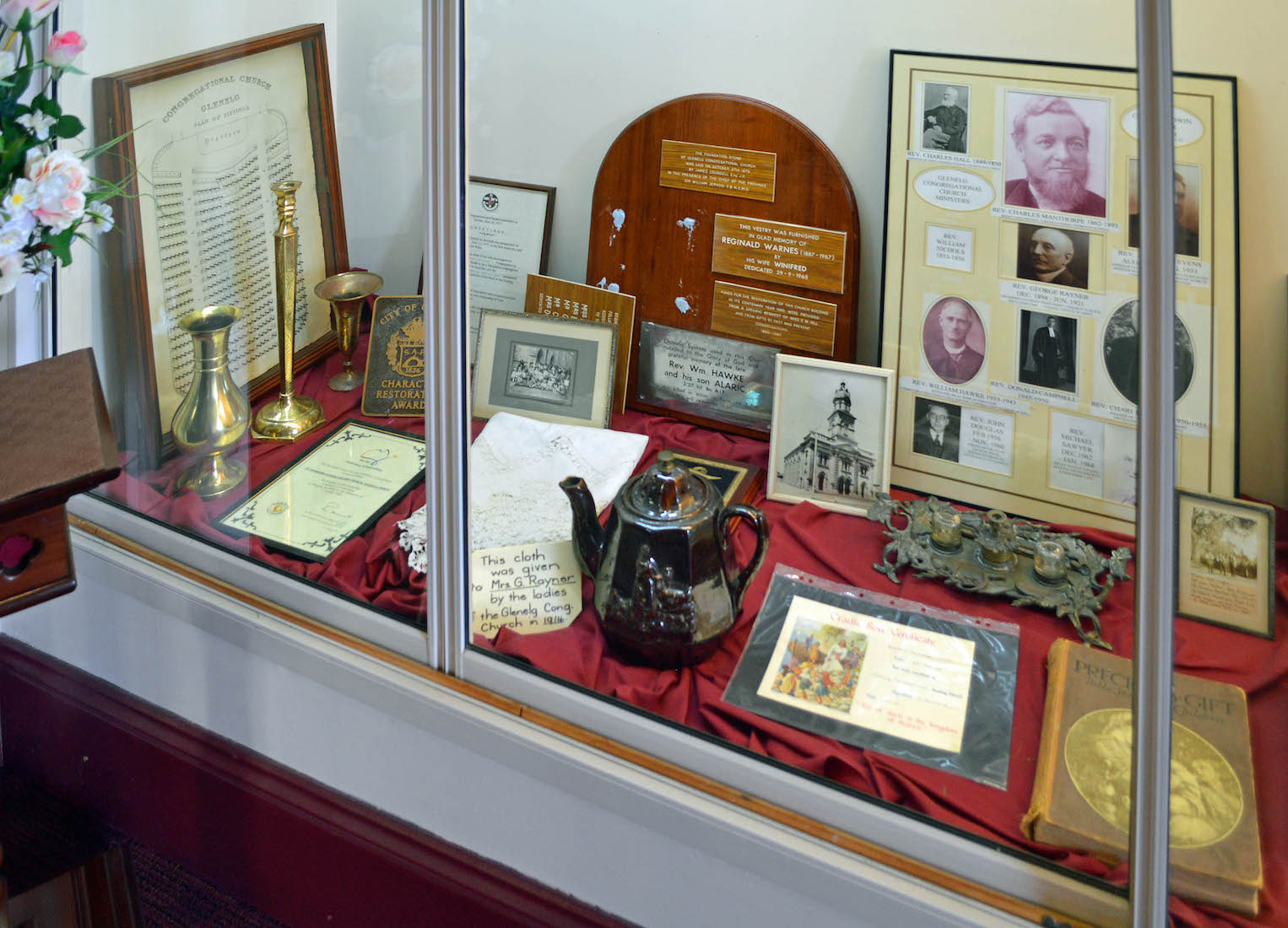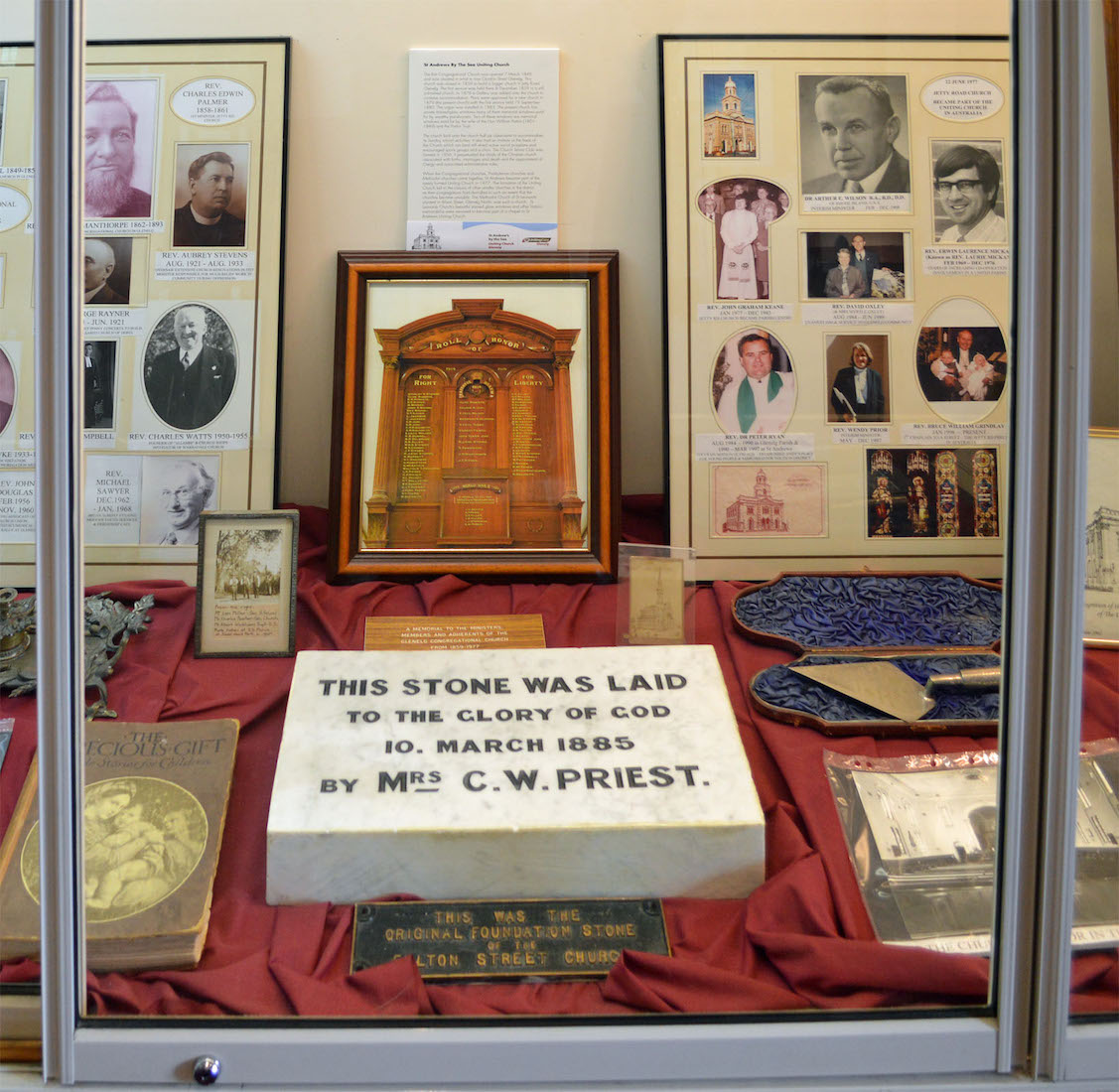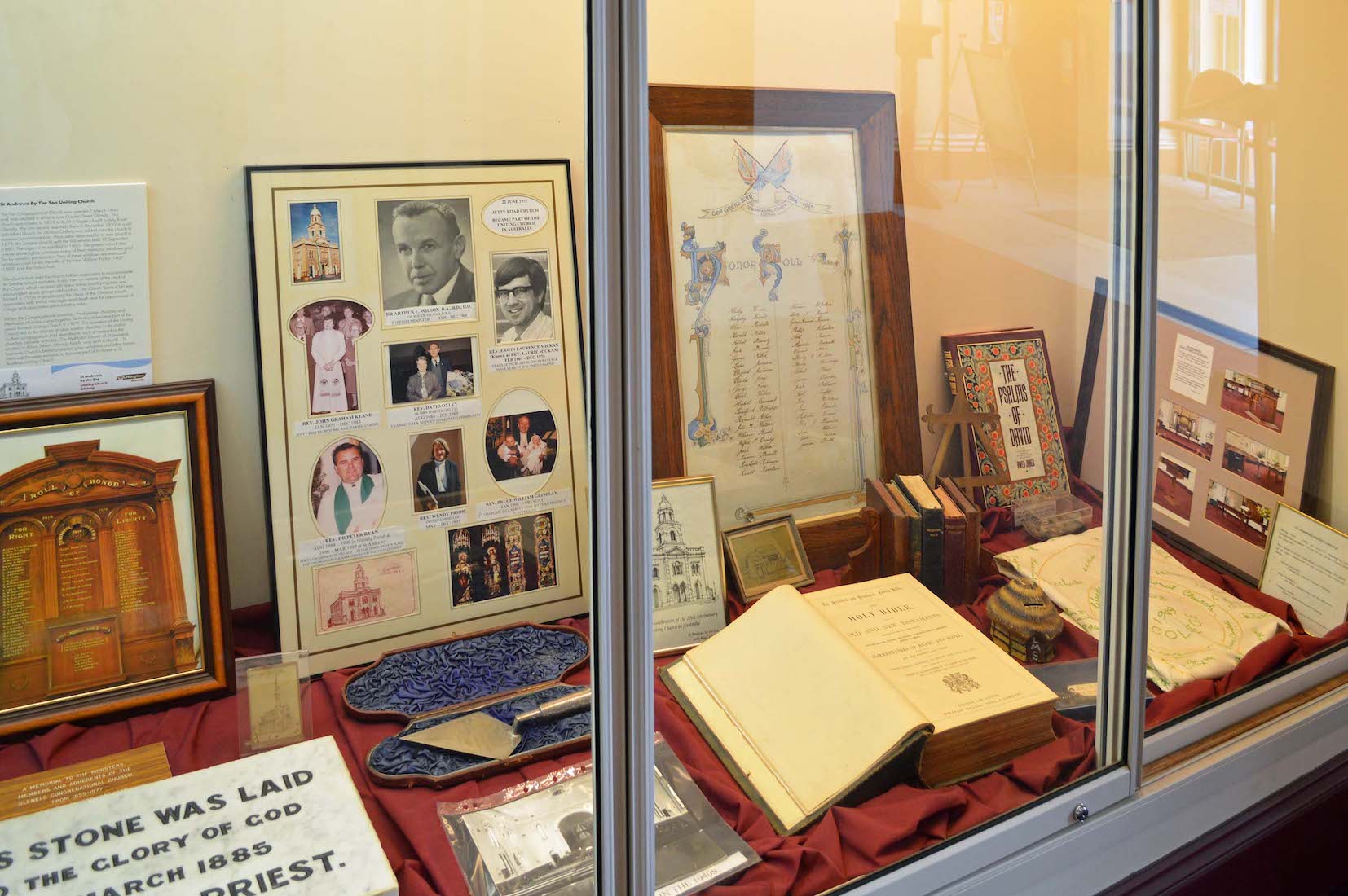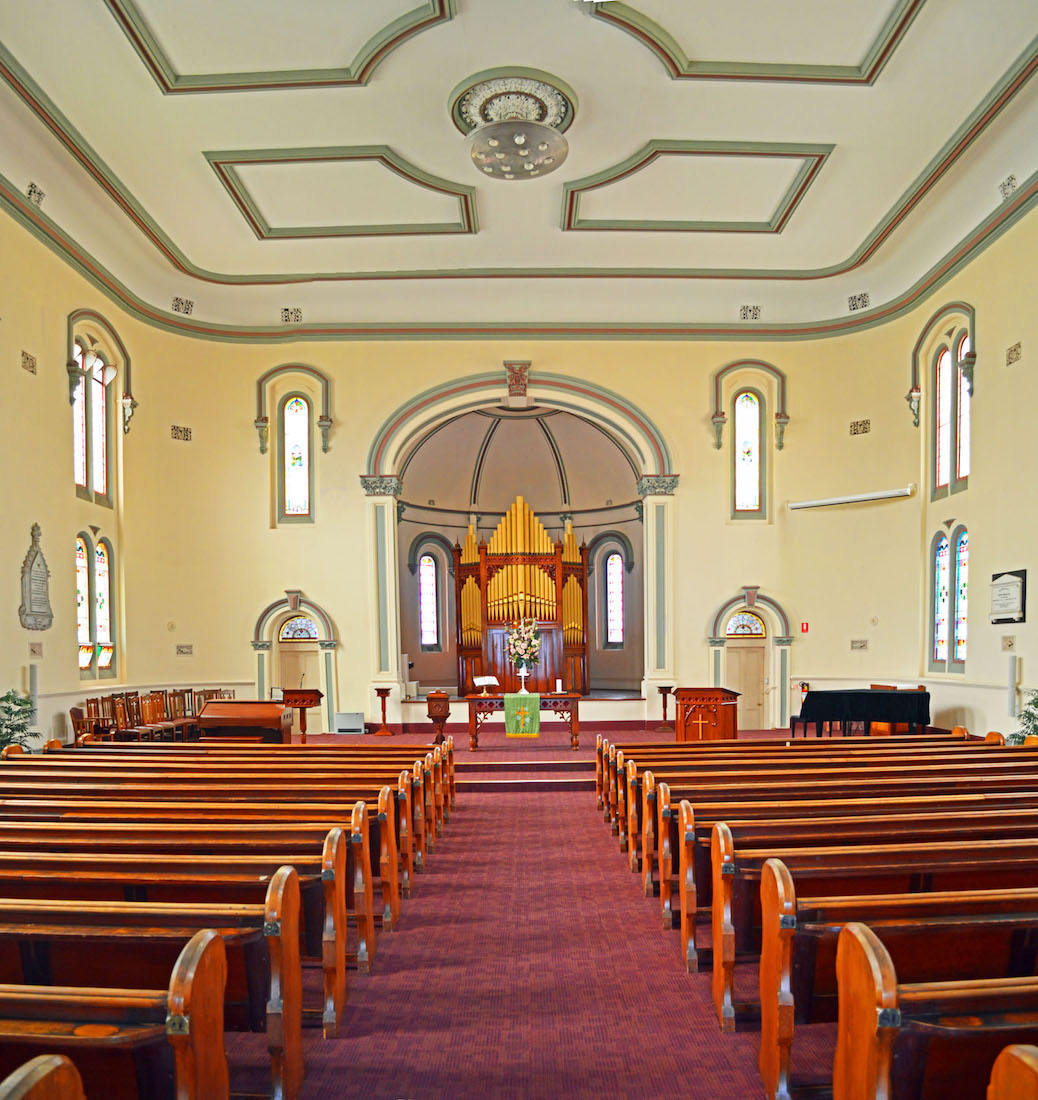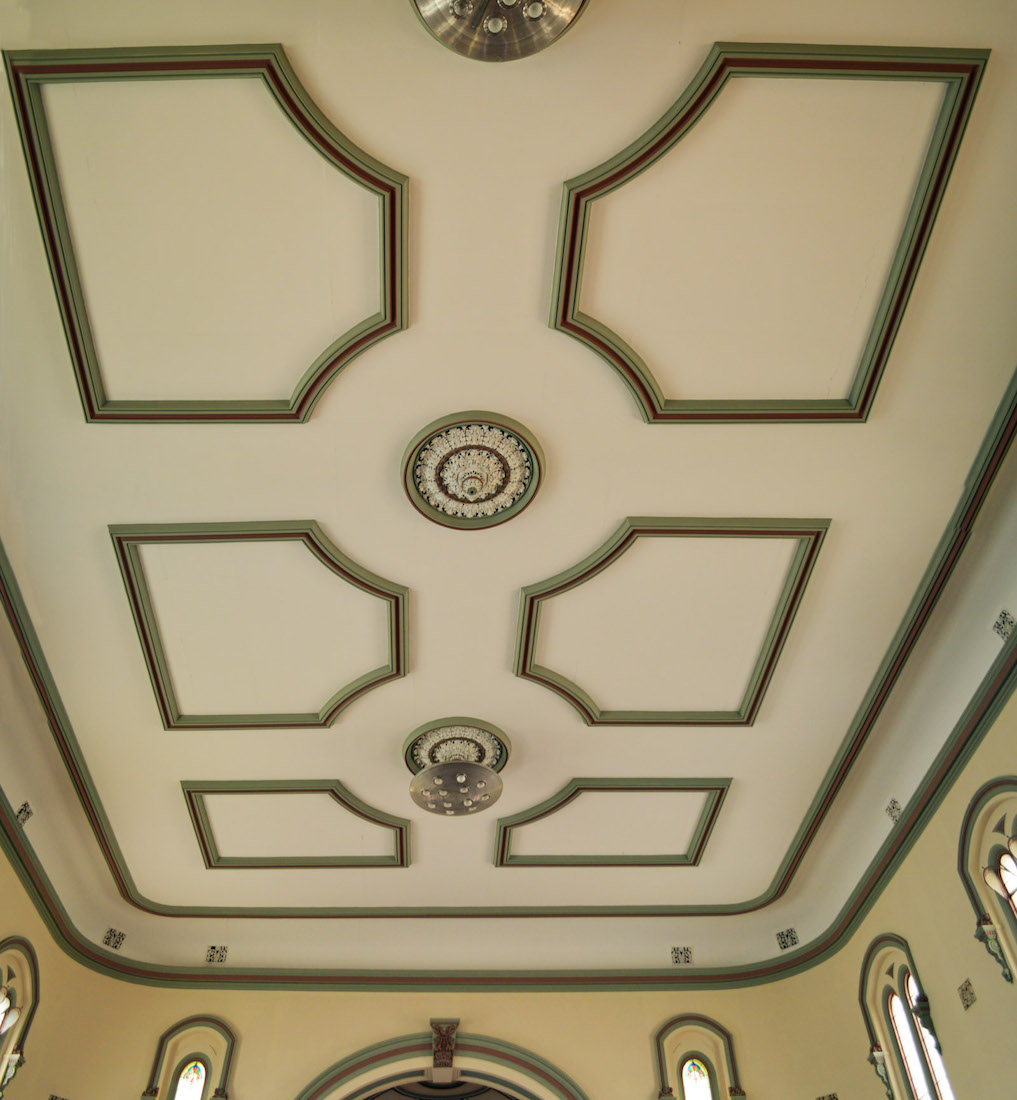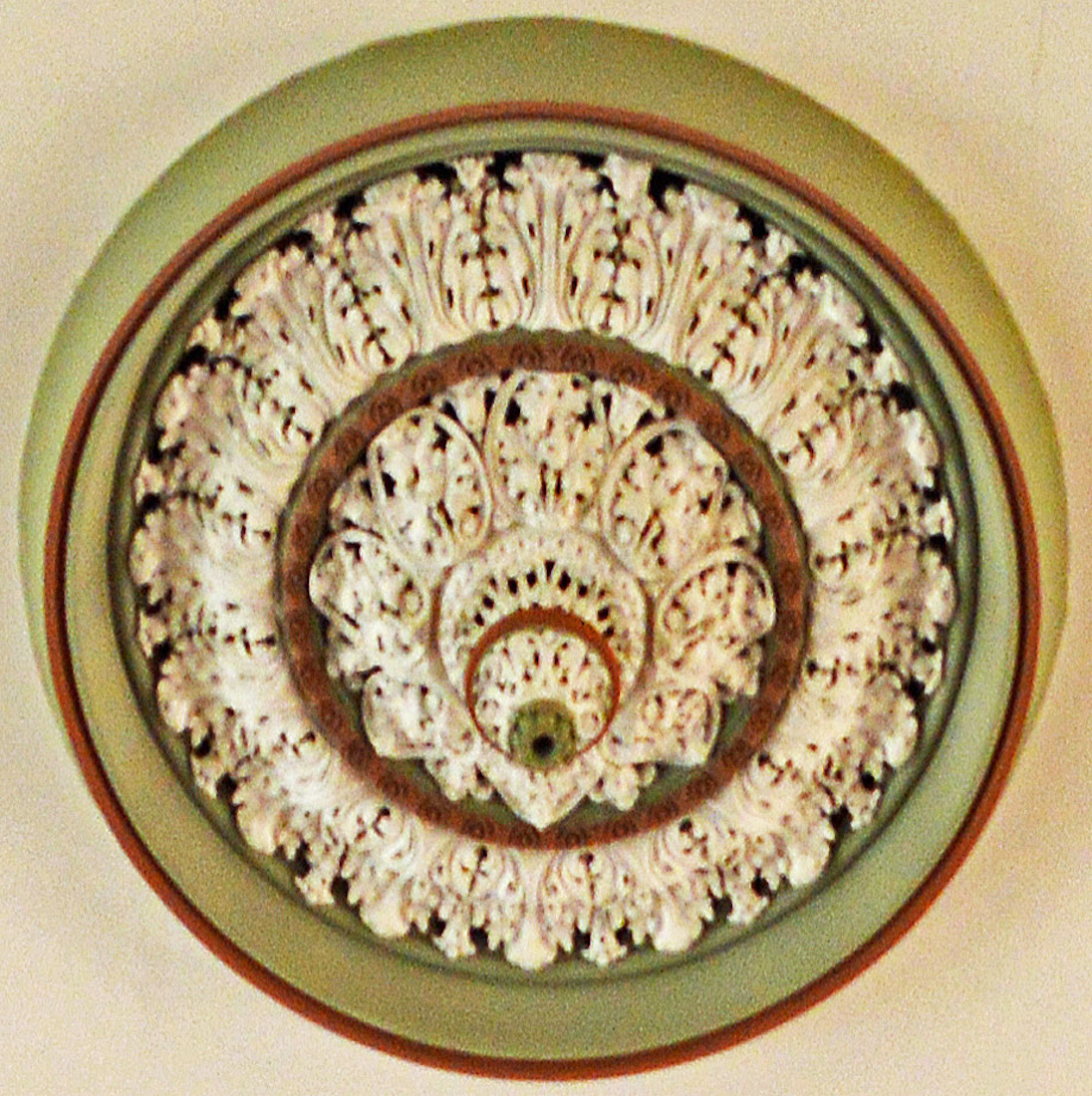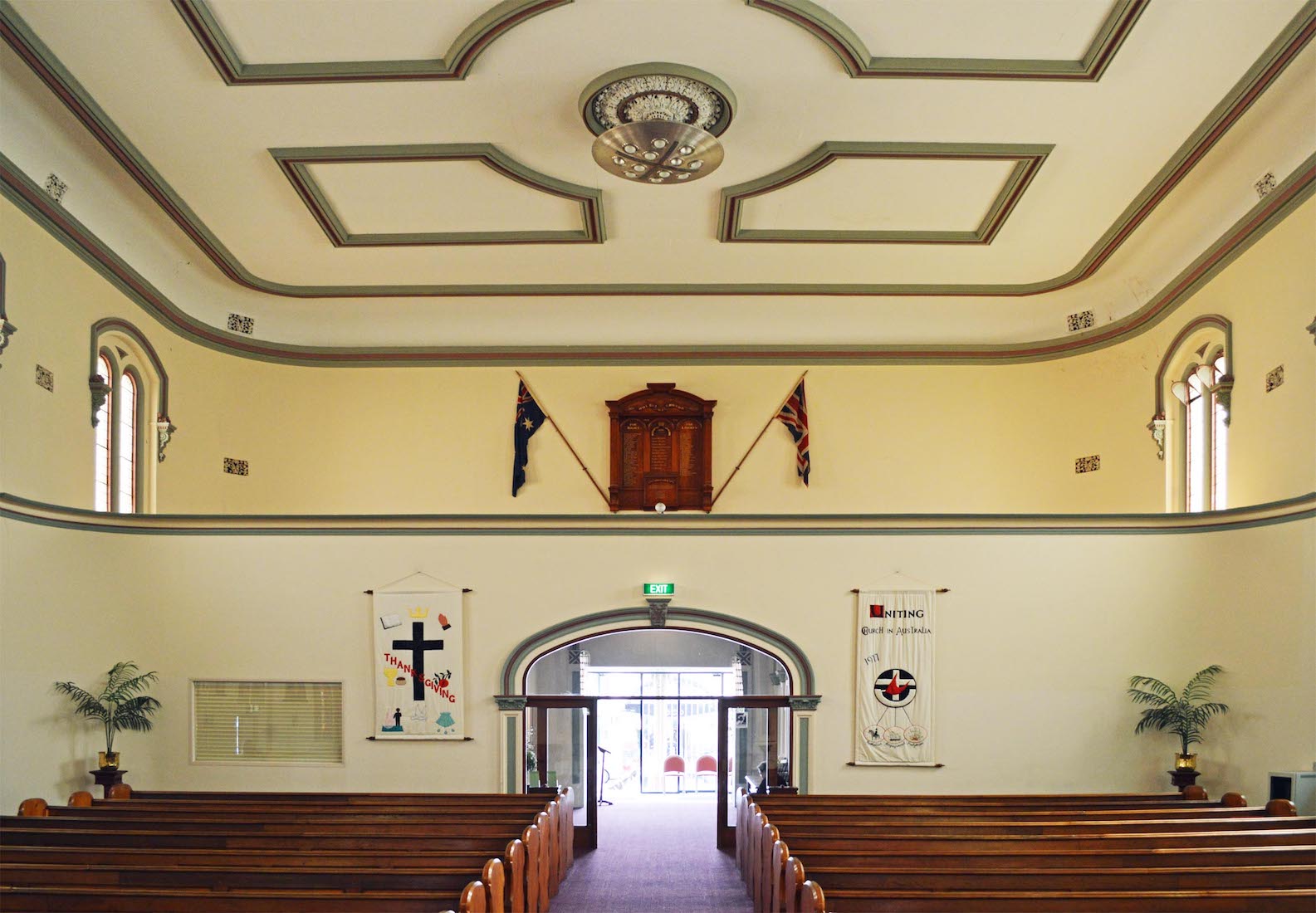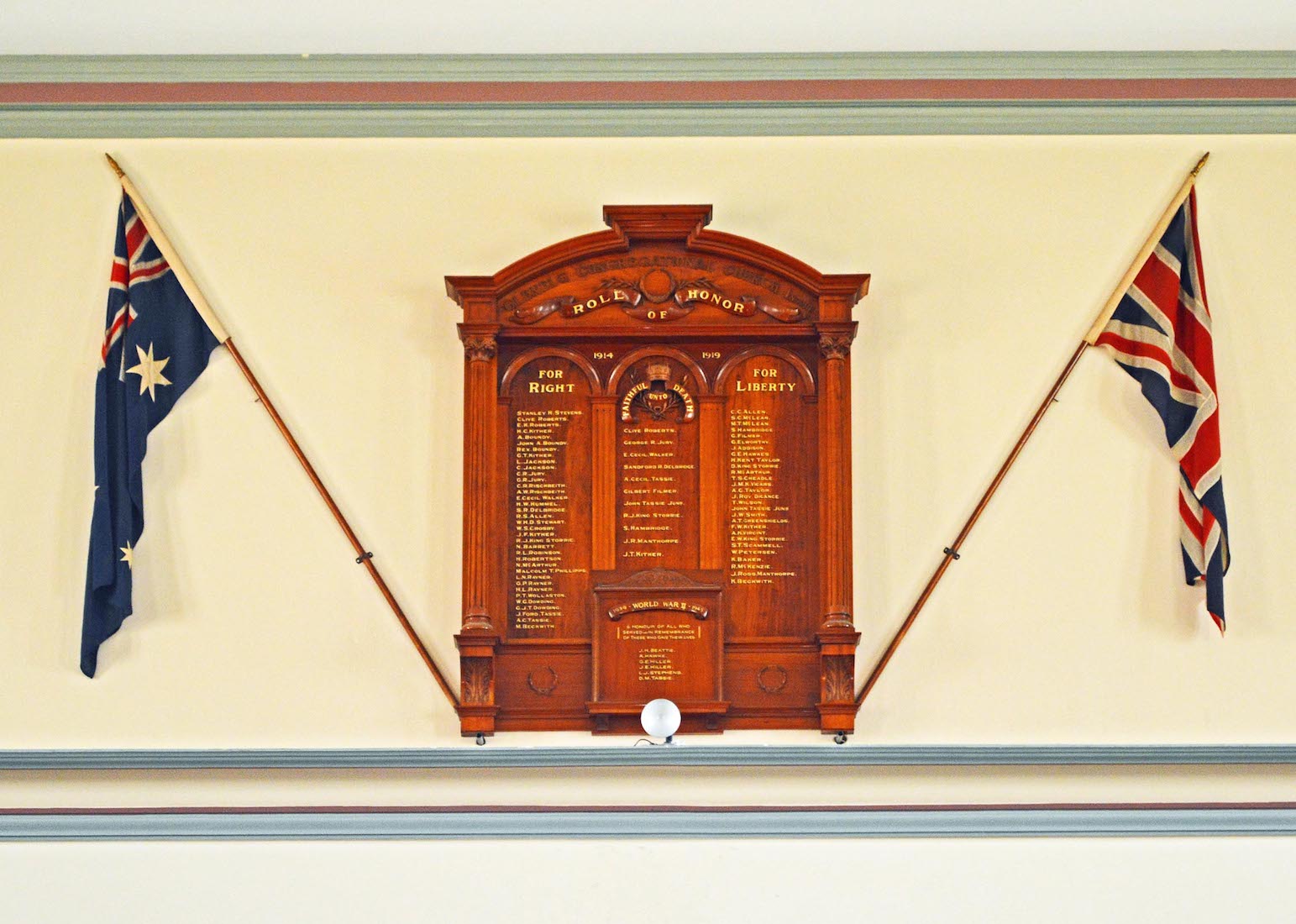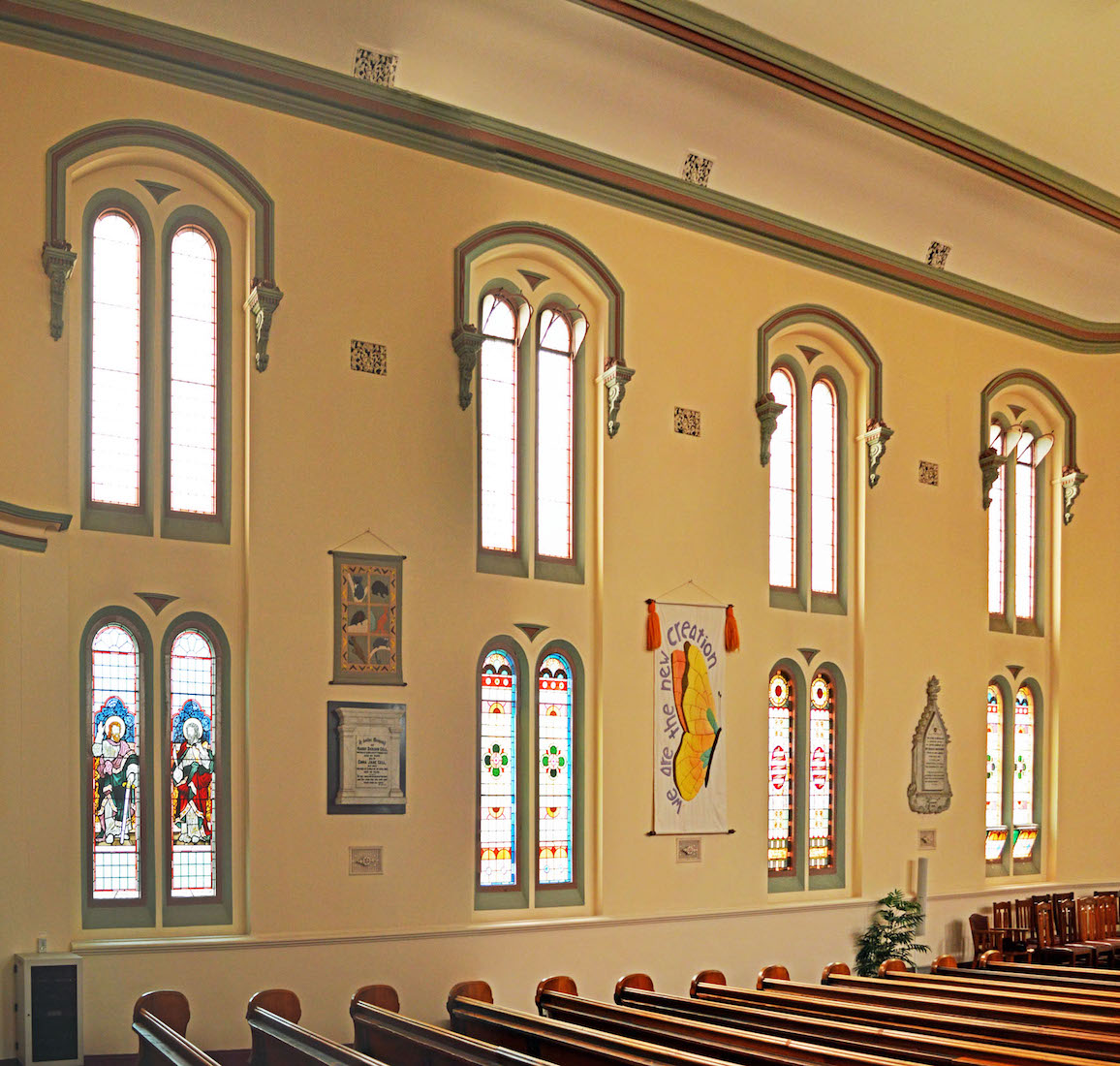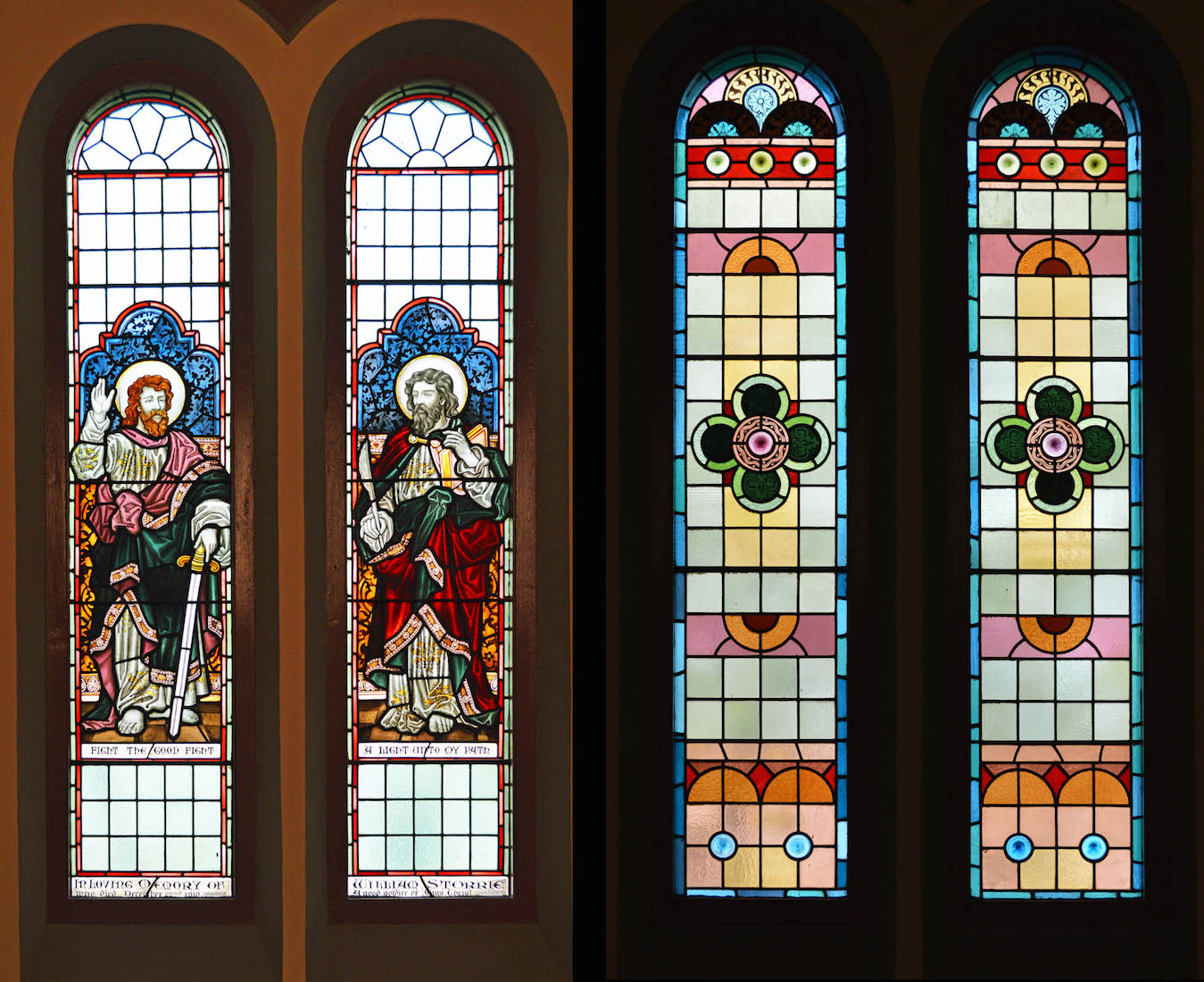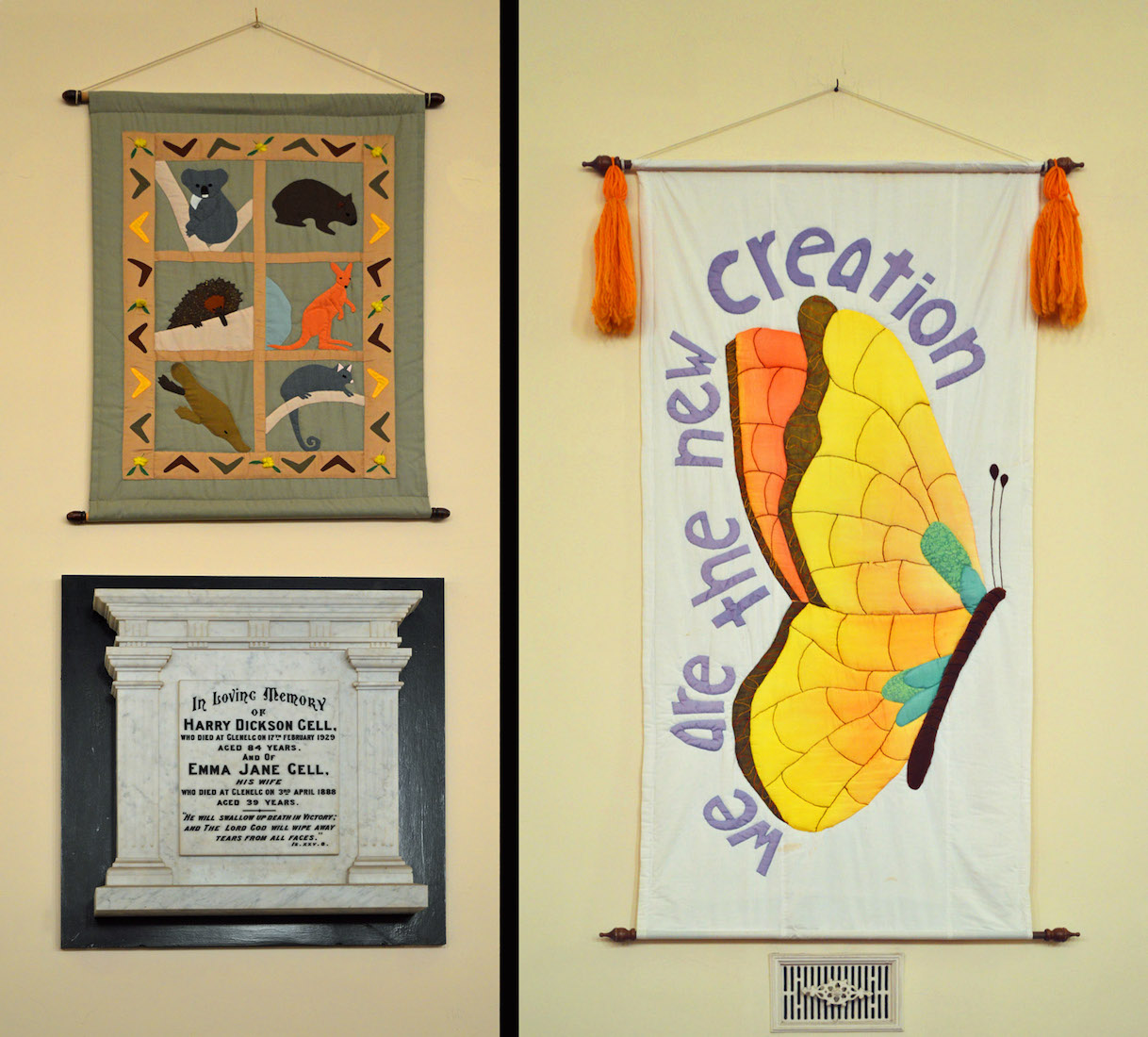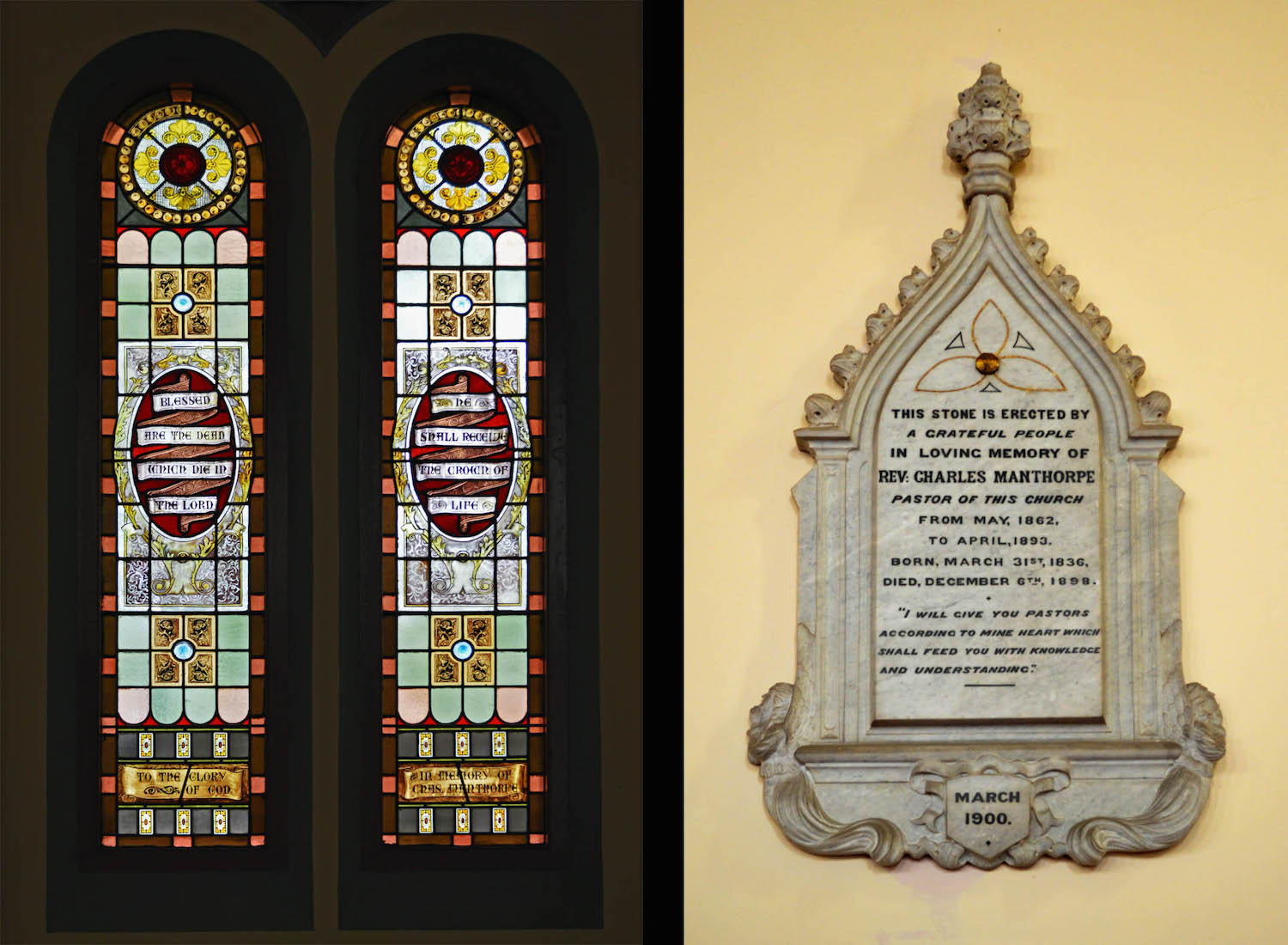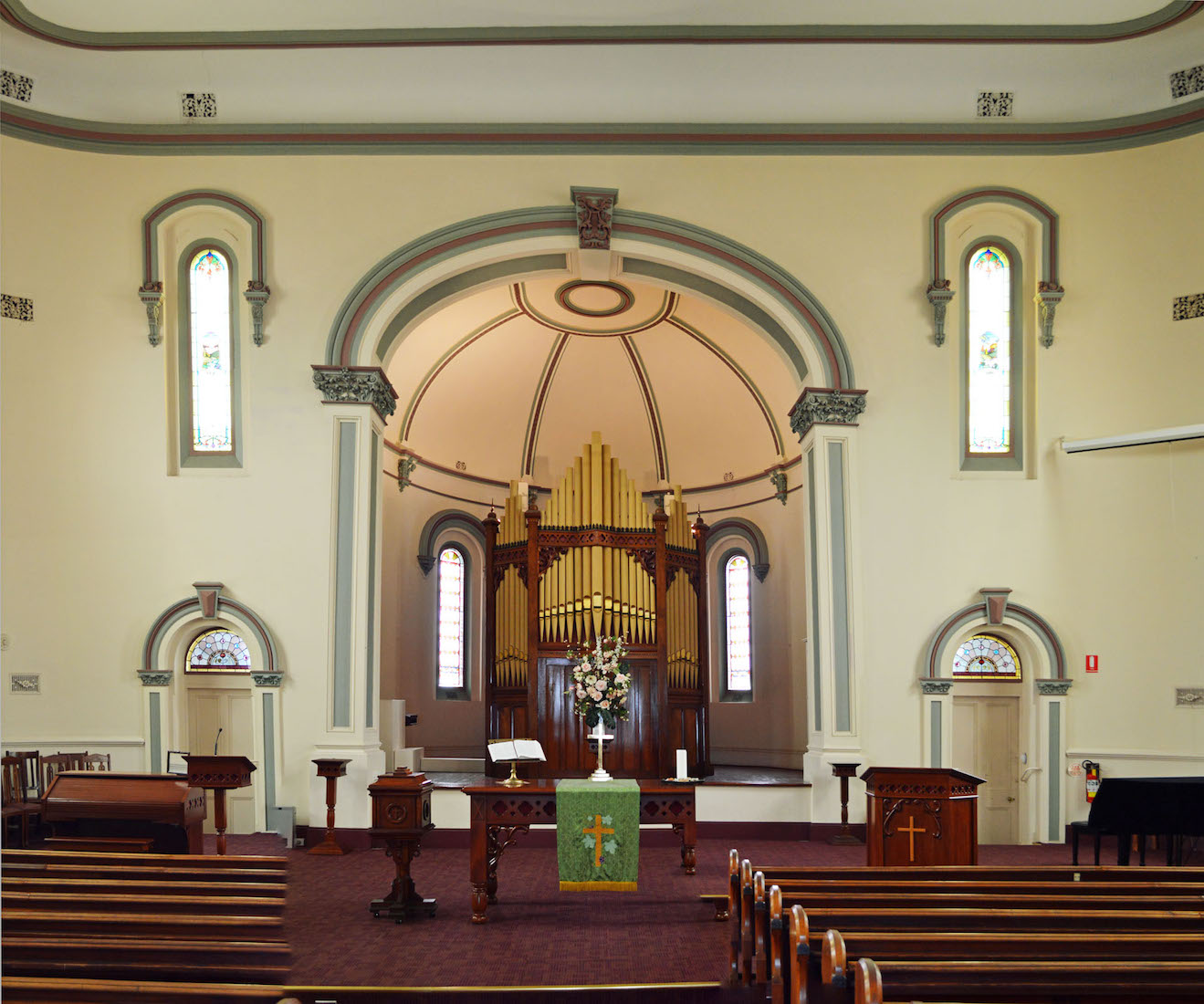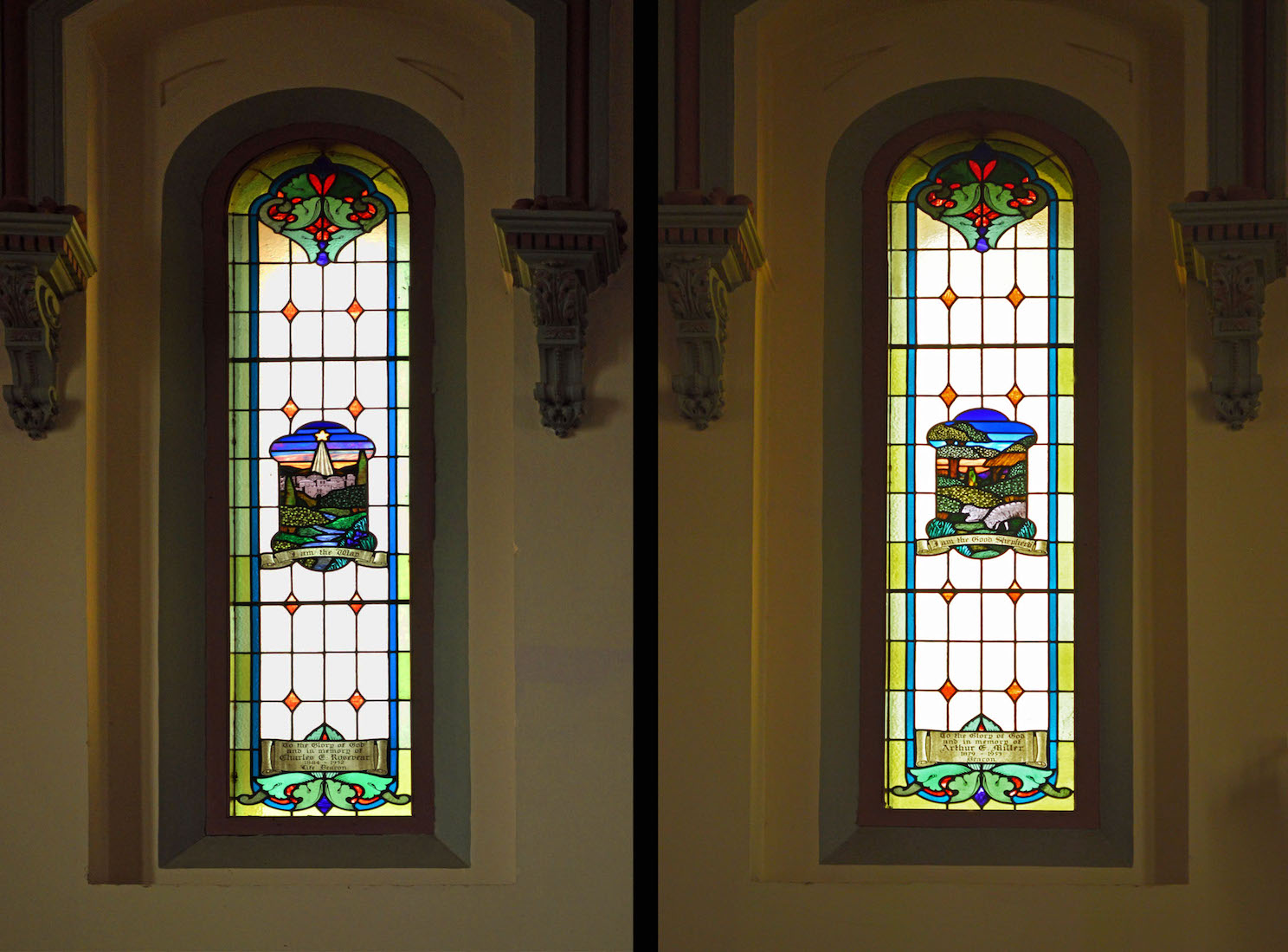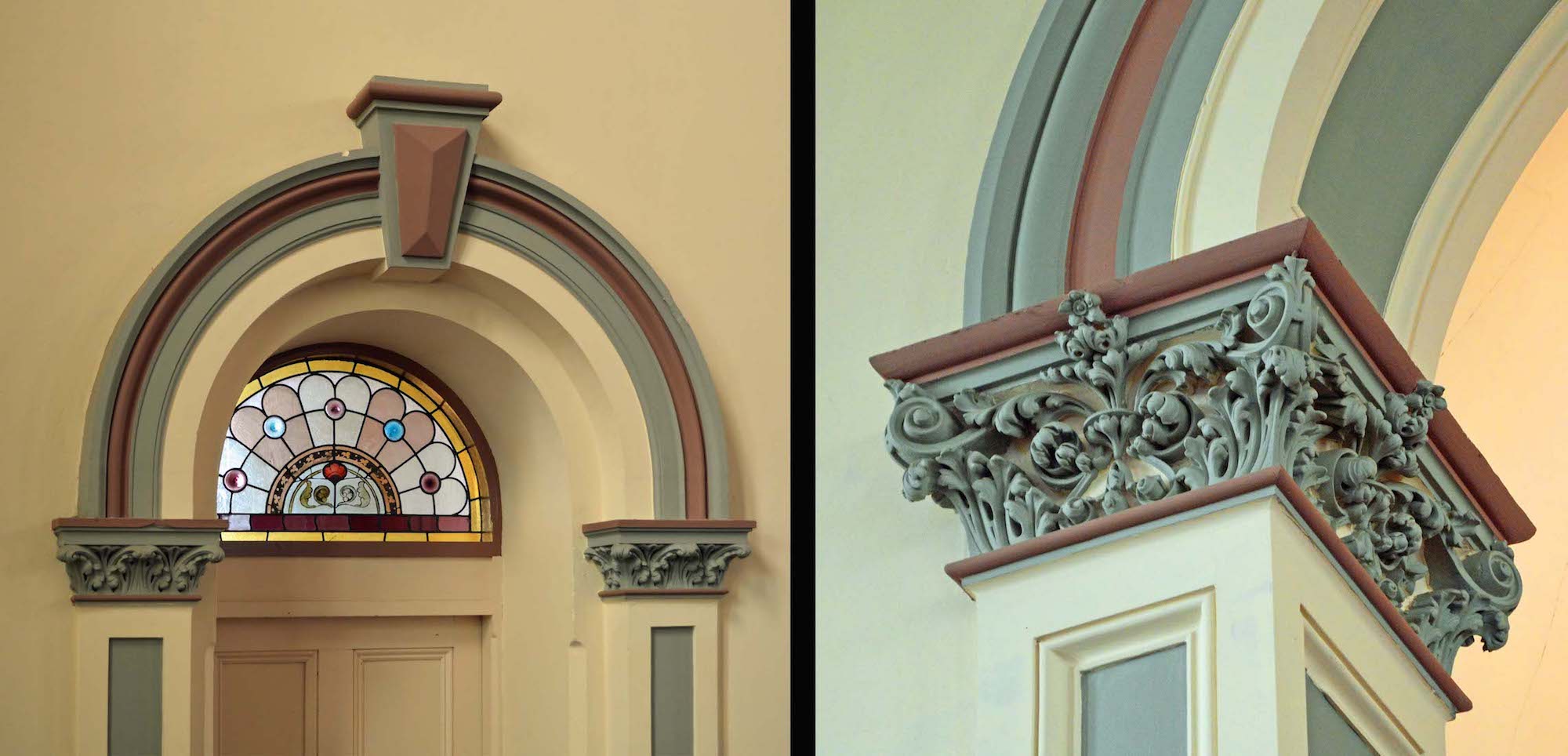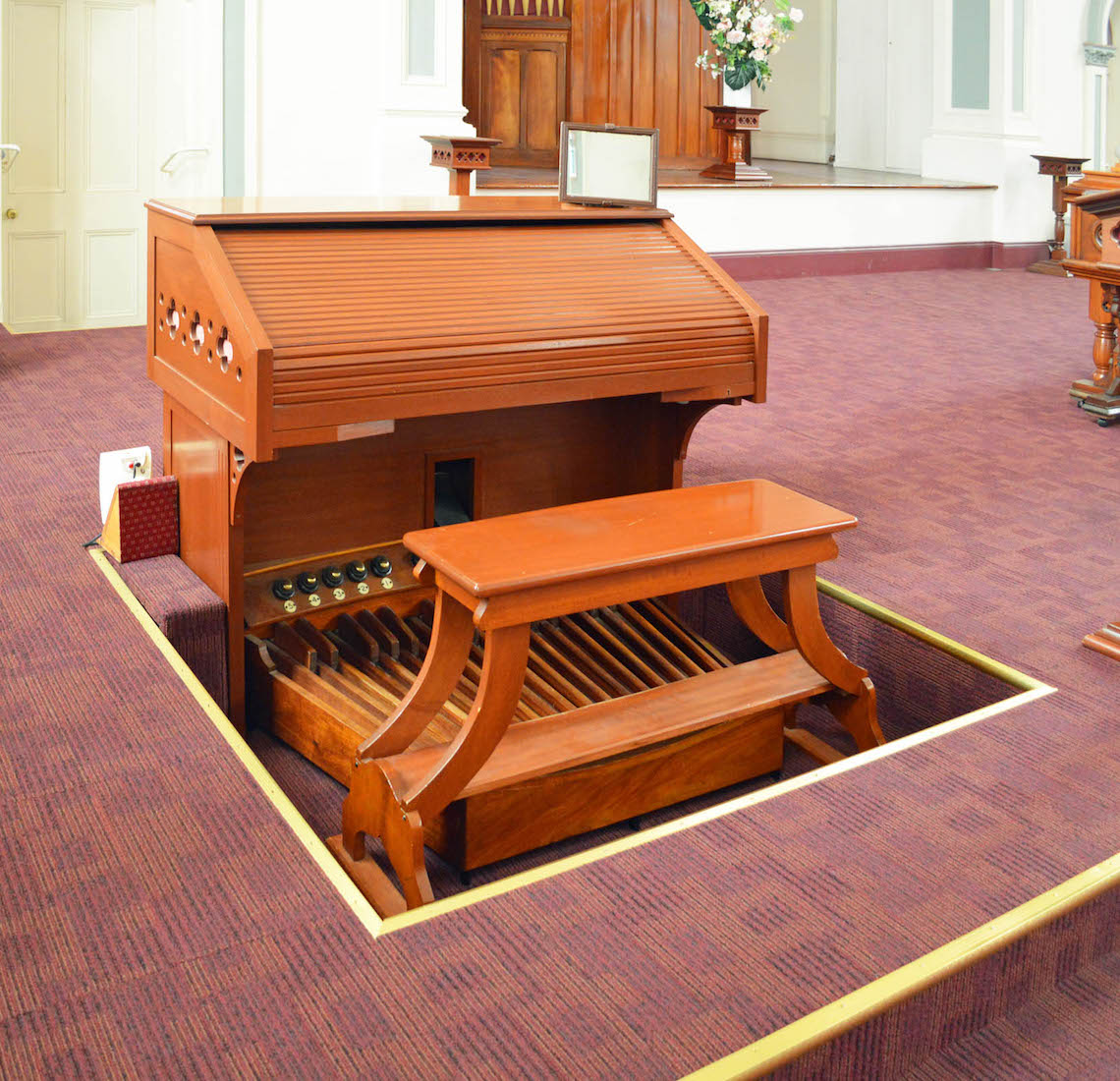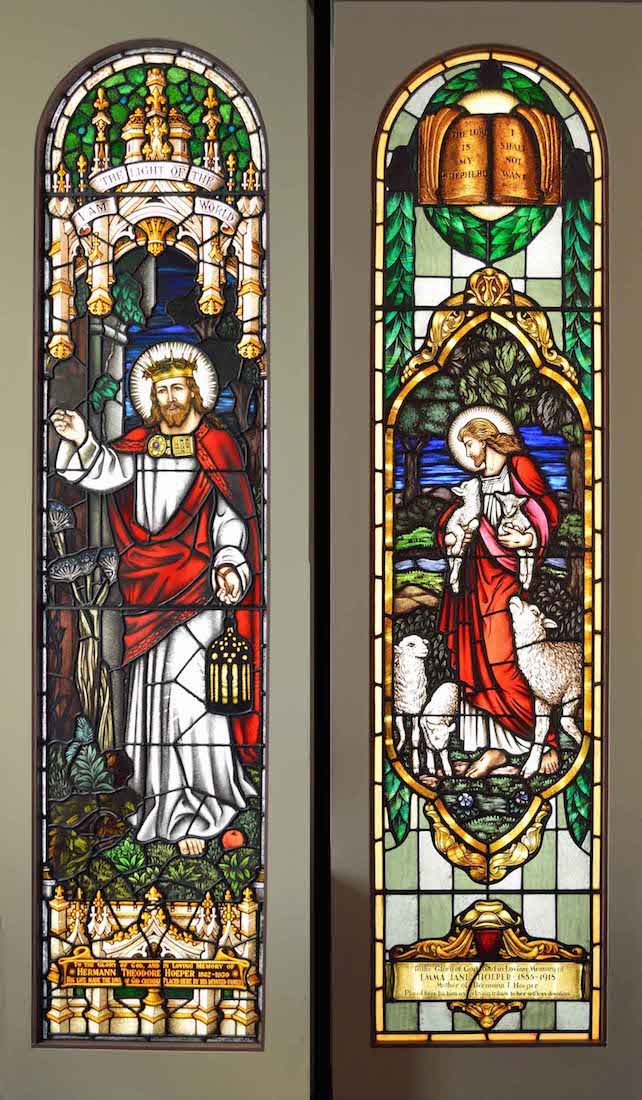
In 1967 the Glenelg Congregational Church joined with Bath Street Glengowrie, St Leonards, and Trinity Methodist Churches to form the Glenelg Uniting Parish. In August 2006 two stained glass memorial windows from the Trinity Uniting Church in Moseley Street, Glenelg were incorporated into the Chapel. They show Jesus as the Light of the world, and as the Good Shepherd. INDEX
22. THE LAST SUPPER

Hanging in the Chapel is this copy of the fresco painting of ‘The Last Supper’ by Leonardo da Vinci. It shows Jesus with his disciples sharing a last supper before the events of the Crucifixion.
23. HISTORICAL DISPLAY
In the hallway opposite the St Leonard’s Chapel is this historical display – articles relating to the history of the Uniting Church and the Glenelg community.
24. DISPLAY I
In this portion of the display, we notice the seating plan at left of the Glenelg Congregational Church, and at right, photos of the various clergy of this Church through the years.
25. DISPLAY II
The items on display here include the foundation stone of the Fulton Street church (St Leonard’s), more clergy from St Andrew’s at right, and at centre back, a photo of the Roll of Honour for St Andrews. This board is located inside the Church, but cannot be viewed closely there.
26. DISPLAY III
Items included here are an old trowel used for the laying of some undesignated foundation stone, a hand crafted Honour Roll for the Great War with names of members of the Glenelg Congregational Church, some old Bibles and books, and some old photos of St Andrew’s.
28. THE CEILING
Remembering back to our walk around the Church, we guess that this wide expanse of ceiling is held up by horizontal beams supported at the edges and braced in the centre by vertical triangular trusses.
29. CEILING ROSE
The central ceiling rose is in itself a work of art.
30. WEST WALL
There are only a few items of interest on the back wall. I was told there is no access to the balcony, so it is not possible to view the Roll of Honour closely. On the wall below is a window through to the Church office, and two banners.
31. ROLL OF HONOUR
This Roll of Honour lists the names of members of the Glenelg Congregational Church who died in the 1914–1918 War. Attached below is a short list of those who died in World War II. Flags of Australia and Great Britain hang on either side.
32. WEST WALL BANNERS
The left hand banner on Thanksgiving has a central Cross and Crown: Christ crucified and now reigning in glory. Around are various items for thanksgiving: prayer, the Bible, Communion, marriage, the sea and fruit. The banner at right celebrates the inauguration of the Uniting Church in 1977, when many Congregational, Methodist and Presbyterian Churches came together.
33. NORTH WALL
We investigate St Andrew’s in a clock-wise circuit. In the North wall are various windows of interest, as well as memorial tablets and banners.
34. NORTH WINDOWS I, II, (IV)
The windows occur in pairs with each window having a rounded top. The windows at left have the themes ‘Fight the Good Fight’ and ‘A Light unto my Path’, and were given in memory of William Storrie who died on December 22nd, 1910. The second and fourth windows are the same.
35. TABLET AND BANNERS
The Memorial Tablet is in memory of Harry Dickson Gell who died in 1929 and his wife Emma Jane who died in 1888. Above is a small colourful banner with an Australian theme: a border of boomerangs and wattle, and pictures of a koala, wombat, echidna, kangaroo, platypus and ring tailed possum. On the large banner is a butterfly and the words ‘We are the new creation’, as in 2 Corinthians 5:17.
36. NORTH WINDOW III
The third window carries the words: ‘Blessed are the dead which die in the Lord, he shall receive the Crown of Life.’ The windows were given to the glory of God and in memory of Chas. Manthorpe. The Tablet is in memory of Rev Chas. Manthorpe (1836 – 1898), who was pastor of this Church 1862 – 1893. The tablet was erected in March 1900.
38. HIGH EAST WINDOWS
The left window features a star and the inscription ‘I am the Way’. It was given in memory of Life Deacon Charles G. Rosevear (1884 – 1952). The right window shows sheep grazing and the words ‘I am the Good Shepherd’. It was given in memory of Deacon Arthur G. Miller (1879 – 1953).
39. DOOR ARCH AND CAPITAL
The decoration we found in the entrance porch is continued here inside the Church.
40. ORGAN CONSOLE
In July 1883, the dedication service was held of an organ installed by the English firm of Fincham and Hobday. The console was removed from the organ case and an electric action installed in 1937 by Hill, Norman and Bear of Melbourne.



